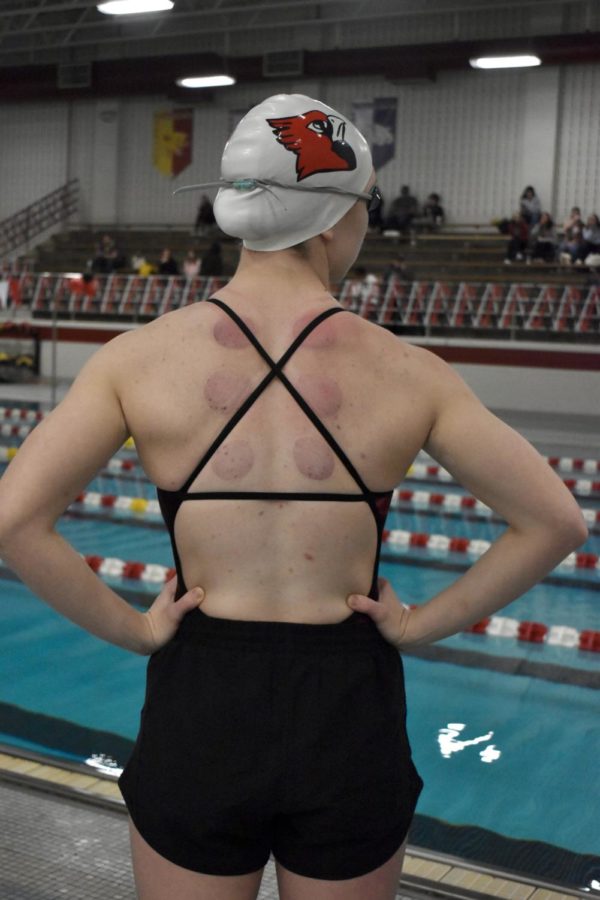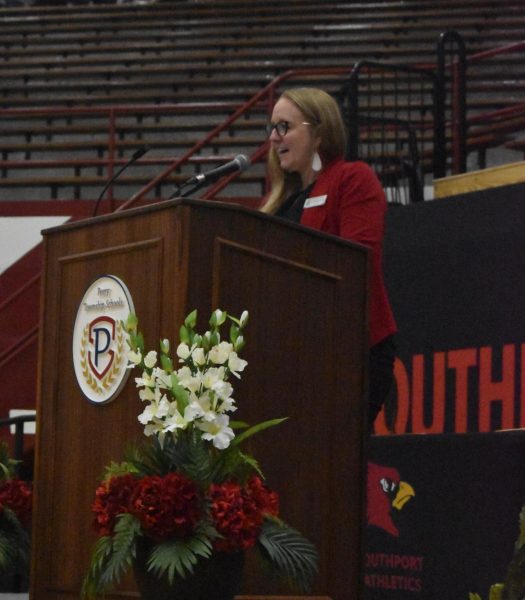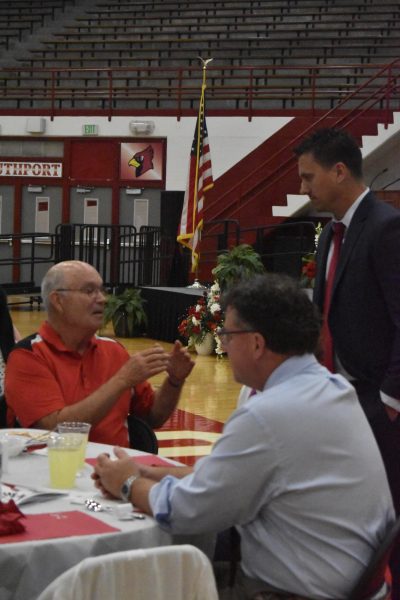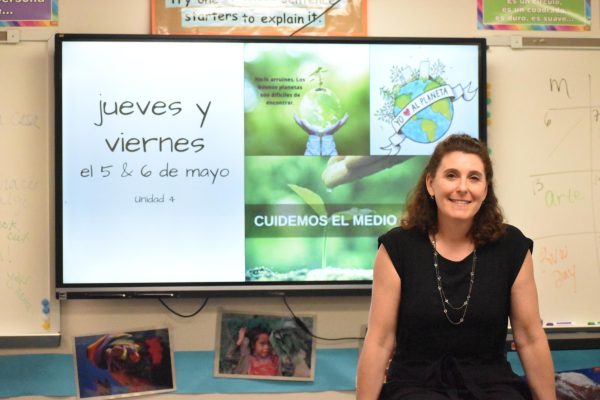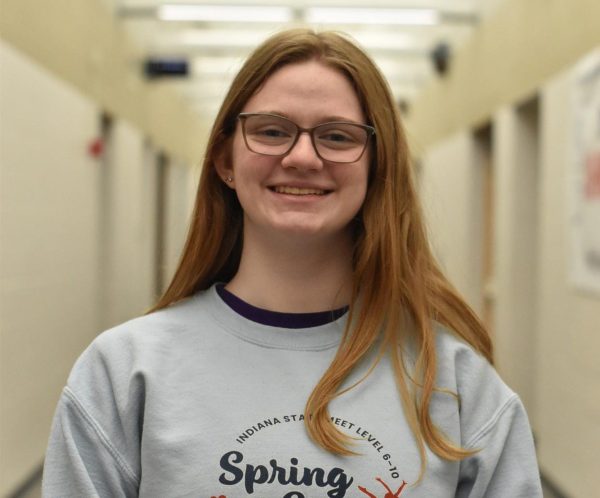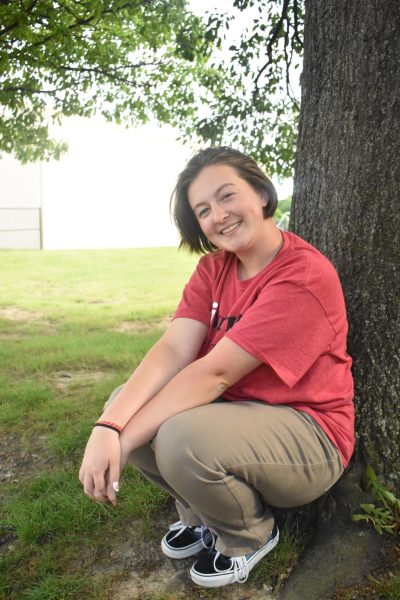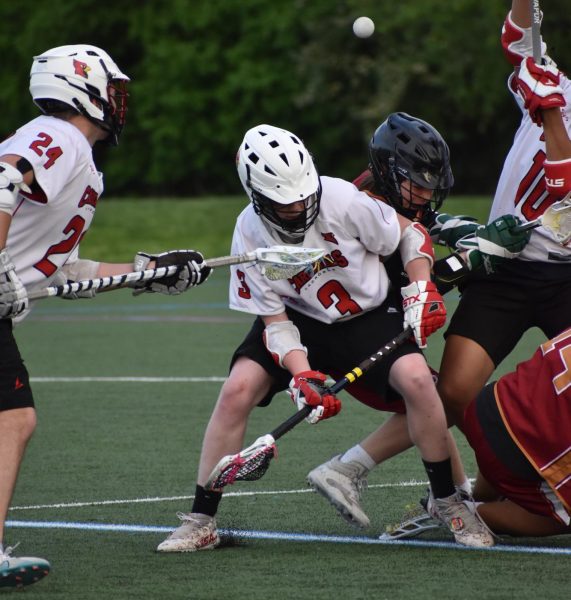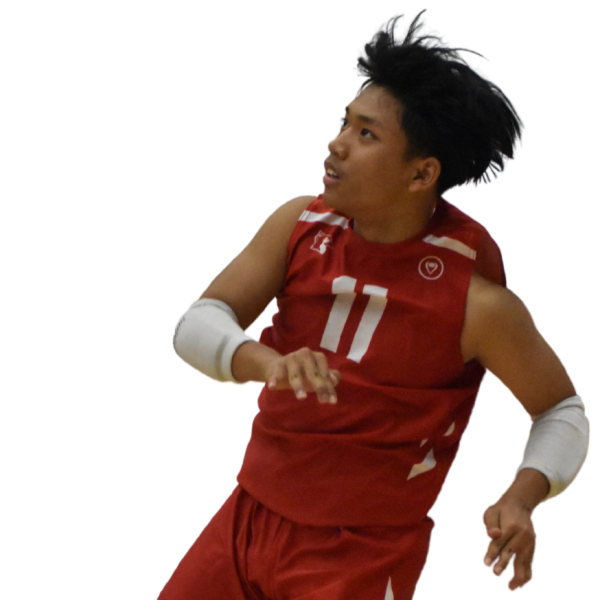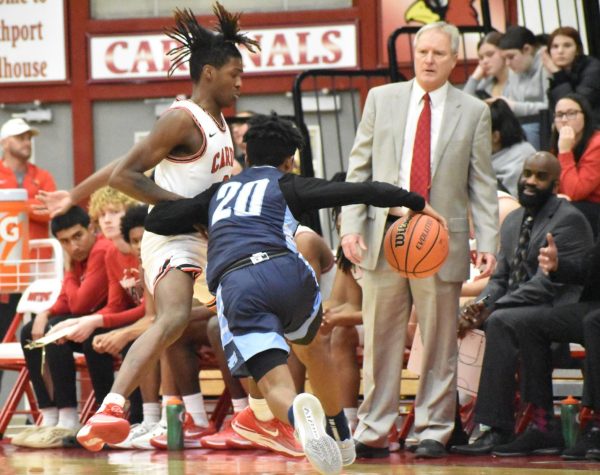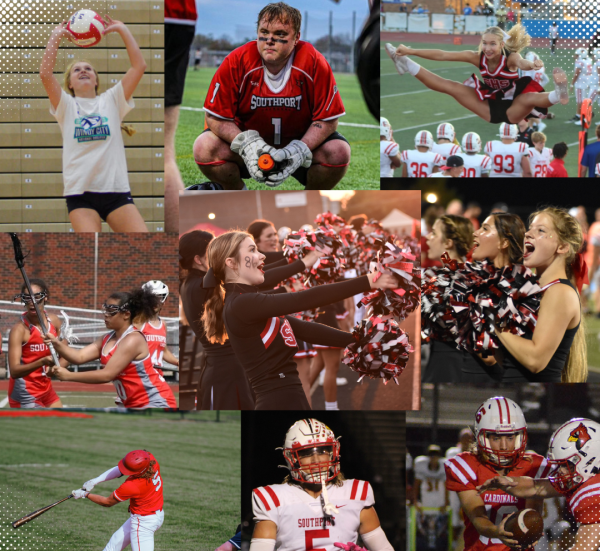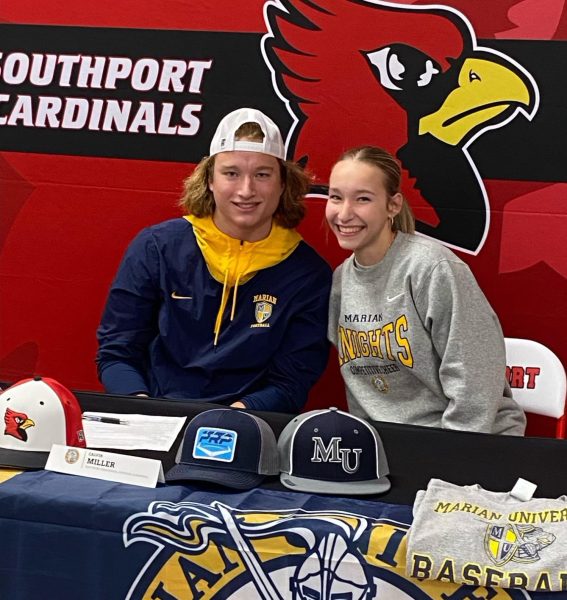Giving pain the cold shoulder
Senior continues swim career despite injury
Senior Noelle Bryan looks across the pool on Jan. 24 at the SHS natatorium. The circular marks on her back are from cupping, which is one of the methods she uses to keep her injury under control.
Swimming has always been a passion for senior Noelle Bryan, and last season, her dream of becoming a Division I swimmer were finally within reach. That was until doctors told her she would have to give up swimming her senior year of high school and during college.
Her once “innocent” shoulder pain took a turn for the worse starting her junior year. After being diagnosed with thoracic outlet syndrome (TOS), doctors thought she wouldn’t be able to continue swimming at all.
Despite these stark predictions, Bryan wasn’t ready to give up on the dream she had worked so hard for all these years. Even in times of doubt and struggle, Bryan knew that she had to push through to reach her goal.
Although facing the challenges of TOS have not been easy, Bryan keeps swimming through the pain to continue to do what she loves.
“I wanted to swim in college, so I never gave up on that,” Bryan said, “and so I wanted to work hard and see if I could get through this.”
After what she thought was a meaningless shoulder painher sophomore year, starting her junior year, it turned into something more. Numbness, swelling and her right arm turning purple were just some of the problems she faced throughout the year. Simple tasks such as homework and driving became increasingly difficult for her to do because of the significant numbness and aching she would feel in her arm.
But the pain wasn’t just affecting her everyday life, it had a huge impact on her swimming career as well. Swimming for extended periods of time started causing so much pain to her arm that, at times, she would have to sit on the side of the pool and watch while the rest of her teammates completed the workout without her.
“It progressed to the point where it was painful enough that I couldn’t even swim half a practice without stopping or having a lot of pain in my arm,” Bryan said.
By this point, Bryan realized that her shoulder needed to be looked at. So, she began trying to find an answer and visited several different doctors. But, all of them came back with different results until one, recommended by athletic trainer Felicia Cooper, confirmed that her pain could be due to TOS.
 To make sure this was an accurate diagnosis, her doctor sent her to a specialist who focused on TOS. After two ultrasounds, Bryan was officially diagnosed with neurogenic TOS.
To make sure this was an accurate diagnosis, her doctor sent her to a specialist who focused on TOS. After two ultrasounds, Bryan was officially diagnosed with neurogenic TOS.
This means that Bryan’s brachial plexus nerve, which is a group of nerves that comes from her spinal cord and sends messages to her shoulder, arm and hand, was being compressed.
“It’s like where you close a water hose and there’s not as much power coming out of it,” Cooper said. “That’s what’s happening to her nerves so her muscles aren’t getting powered up.”
The next step after her diagnosis was to get into physical therapy. The hope was that it would improve her strength and get her back to swimming, but it didn’t seem to be working. At this point, the mental strain of her injury was starting to take a toll on her.
With the pain Bryan was going through, at points it didn’t seem worth it to even continue swimming if she wasn’t improving at the same rate that her teammates were.
“There have been a lot of times through this whole thing where I was kind of borderline wanting to give up,” Bryan said. “Sitting there watching everybody was really rough.”
That was until head swim coach Tricia Mangila helped Bryan keep pushing toward her goals, even through the most painful and hard moments. Mangila has aided Bryan throughout her journey, whether it be with words of encouragement or adjusting practices so Bryan was able to swim without putting so much strain on her arm.
To help Bryan, Mangila took things one day at a time, striving for small improvements with each practice.
“You don’t know what the future holds (with injury), so all you can do is concentrate on that day and how can we improve for the next day,” Mangila said.
As her senior swim season began, Bryan had to start from square one and build her endurance up as the season went on. Although this was difficult for her to accept, with the help of Cooper and Mangila, she was able to get back into shape in a way that didn’t hurt her arm as much as it did last season. This has led Bryan to be able to swim 90% of the time in practice, and the pain in her arm has become less excruciating compared to last season.
As a result, Bryan has been able to swim 90% of the time in practice, and the pain in her arm has become less excruciating compared with last year.
Although Bryan’s arm will still cause pain if exerted too much, it is much more manageable than last year. Between physical therapy helping to strengthen her muscles in order to support her shoulder and Cooper helping her stretch the nerves in her arm, she has been able to make a lot of progress throughout the season.
But, even though this season will come to a close at the state meet Feb. 10-11, her journey with swimming won’t. This fall Bryan will attend the University of Wisconsin-Milwaukee, a Division I school, where she will compete on their swim team. With the support staff at her university, Bryan feels like her TOS will be the least of her worries throughout the next four years. Between different practices and fewer training hours, Bryan knows that she will be set up for success there and can’t believe her dream is finally coming true.
“I feel like I’ve made a ton of progress,” Bryan said. “These next four years are going to be really amazing, and I’m hoping that I will continue to improve.”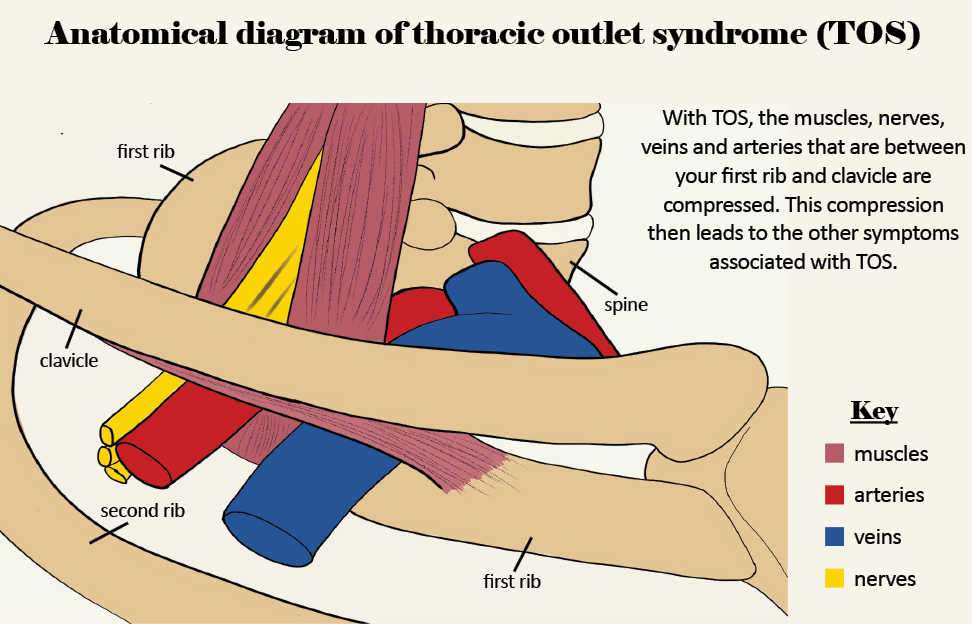
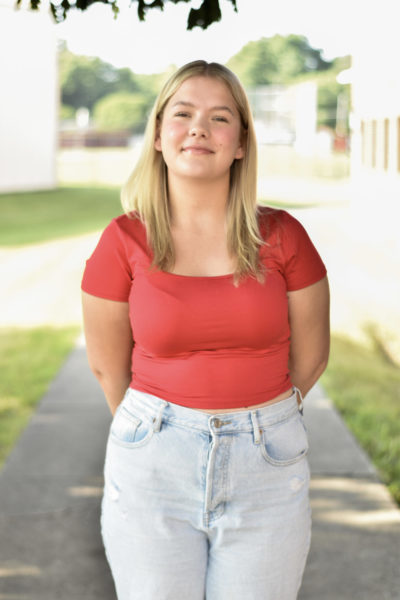
Hi Everyone! It’s Claire and this year I’m coming back as Lifestyle Editor. I’m going into my junior year and I’m so excited to be back on The...


